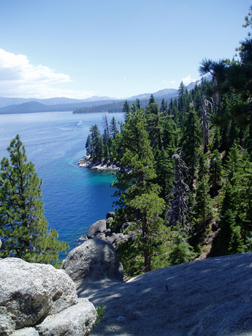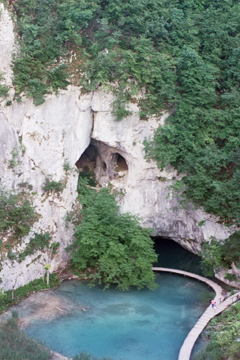Every month, we'd like to feature one of your photos from anywhere in the world and invite other readers to guess where it was taken. Look every month in the print Geotimes for a new photo. Following are clues, answers and winners from past issues.


| Do you have slides and photos you've
collected from field work or vacations? Every month, we'd like to feature one of your photos from anywhere in the world and invite other readers to guess where it was taken. Look every month in the print Geotimes for a new photo. Following are clues, answers and winners from past issues. |
 |
| Send answers for the August 2005 Where on Earth?
contest, which appears in the print magazine, to Geotimes by Aug.
28 (or postmarked by this date). From those answers, Geotimes staff
will draw the names of 10 people who will win Where on Earth? T-shirts.
And from those 10 names, we will draw the names of two people who will win
a Brunton compass.
Click here
to submit a guess for this month's Where on Earth?
contest. Submit
photos for Where on Earth? |

|
Clues: 1. The area is composed almost entirely of a massive salt-and-pepper-colored granite batholith, underlain by active faults. Huge granite slabs line the many hiking trails in the area. 2. This location is the only place that ever freezes over within the larger body of water and was named because of its gem-like color. More than 60 streams flow into the larger body of water but only one flows out. 3. This bay contains the only island to be found in the more than 190-square-mile water-filled basin. The island is a 150-foot-high granite upthrust, topped by sparse vegetation and remains of a stone structure carried out to the island in the 1920s.
Name the location. Scroll down for the answer |
| Answer: Emerald Bay on the western side of Lake Tahoe is a National Natural Landmark and a California State Park. The glacially carved turquoise bay is surrounded by granite cliffs. Fannette Island, located in the bay, is the only island in Lake Tahoe. Photo by Megan Sever. |
June 2005 Winners
Richard Cohoon (Russelville, Ark.)
Fred DeWiel (Calgary, Alberta)
David Gius (Dixon, Calif.)
Pamela Gore (Decatur, Ga.)
Don Lindsay (Bakersfield, Calif.)
Karen Locke (Santa Clara, Calif.)
Larry O’Brien (Middletown, N.Y.)
Steve Sittler (Granger, Ind.)
Michael Starbuck (Rolla, Mo.)
Dana Willis (Winnemucca, Nev.)

|
Clues: 1. The term karst came from this part of the world, which is known for its incredible Mesozoic-aged limestone and dolomite sinkholes and caves. Half of the topography of the host country is karst. 2. This park boasts cascading waterfalls up to 80 meters tall and many interconnected lakes. Through a symbiotic relationship, calcite-producing algae create dams and barriers between the lakes made of travertine, a precipitated mineral. 3.The location is a UNESCO World Heritage Site and is the host country’s
first national park, declared in the mid-20th century.
Name the park. Scroll down for the answer |
| Answer: Check back next month for the answer to and winners of the July Where on Earth? in Geotimes. |
 |
Geotimes Home | AGI Home | Information Services | Geoscience Education | Public Policy | Programs | Publications | Careers |